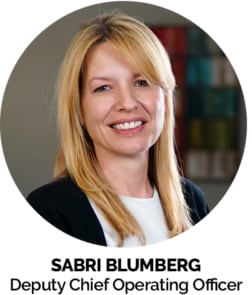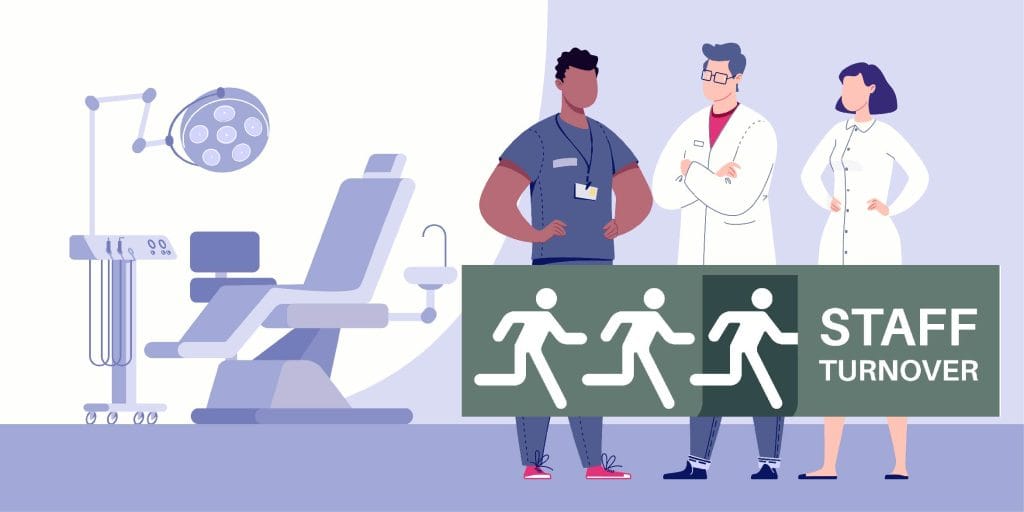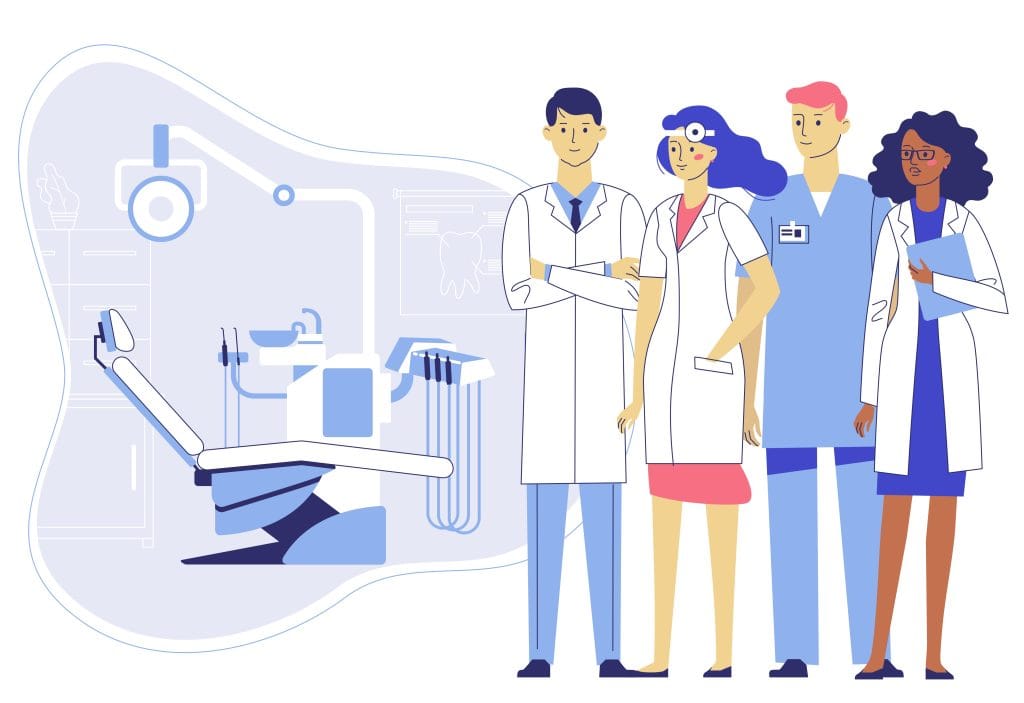 If you hire a new administrative staff member, what’s one of the first things you’d have them do?
If you hire a new administrative staff member, what’s one of the first things you’d have them do?
Answer the phones?
If this was your response – you’re not alone. It’s what most dental practices do. And it could be costing you – a lot.
Often thought of as an “entry level position,” reception in a dental practice is much more significant. It’s the first impression patients get of your practice, and it can either set you up for success or leave you scrambling to recover.
When a new patient calls your practice, they’re making judgments about you and your office before they make an appointment. If your receptionist sounds untrained, disorganized, scattered, or unfriendly, it takes what was a potential patient and turns them into a missed opportunity.
Bottom line? A sharp, talented receptionist can make the difference between a practice that’s thriving and one that’s leaking potential patients. So, let’s dive into the details—why this role is so critical, how to avoid common problems, and what you can do to ensure your receptionist is the perfect fit for your practice.
Why the Receptionist Role is So Critical
 This shouldn’t come as a surprise, but it’s worth repeating: your receptionist is the first point of contact for new patients. They are the first human interaction potential patients have with your office, and their impression of that person will significantly impact whether, or not, they book an appointment.
This shouldn’t come as a surprise, but it’s worth repeating: your receptionist is the first point of contact for new patients. They are the first human interaction potential patients have with your office, and their impression of that person will significantly impact whether, or not, they book an appointment.
Here’s a stat that should make you think. A dental marketing company, Viva Concept, conducted a study where they reviewed 10,000 recorded new patient calls. The findings? Well, they were sobering – the average conversion rate for a new patient phone call for a dental practice in the United States was…23%. Yes, 23%. And that was the average (which means some were worse if you could imagine). So, do the math, if you’re the average practice getting 100 new patient calls a month, you’ll only schedule and see 23 of them – meaning 77 patients (77%) are just…gone.
A lot of practices, when they’re not hitting their new patient goals, immediately think, “I need more marketing.” They pour more money into Google ads, mailers, and social media campaigns. And that’s fine. But the truth of it is, if your receptionist isn’t trained to handle those calls effectively, it’s like pouring more water into a bucket with a hole in it. You can spend thousands to get the phone to ring, but if the person answering can’t convert those calls into appointments, the waste factor is enormous.
Organizational Aspects: Avoiding Problems
If I had to pick the top two problems at the front desk for most practices, it’s:
- Untrained or ineffective staff. And keep in mind lack of training could make what would be an effective employee ineffective and,
- Poor division of labor, or just plain overload – not enough staff to keep up with expansion. In smaller offices, it’s not uncommon for the receptionist to wear many hats. They answer phones, schedule patients, check patients in, and verify benefits (and more). That’s a lot to ask of one person, and as your practice grows, it can lead to inefficiencies that cost you new patients.
If your receptionist is handling a new patient call, while the phone is ringing and trying to check a patient out, the new patient will likely be put on hold—maybe even multiple times. That kind of scattered interaction can hurt your chances of booking that appointment. In larger practices, or even smaller ones with increasing patient volume, you may need to split responsibilities between different roles.
kind of scattered interaction can hurt your chances of booking that appointment. In larger practices, or even smaller ones with increasing patient volume, you may need to split responsibilities between different roles.
Consider dividing your front desk into specialized positions:
- Receptionist: Handles incoming calls and communication flow. Greeting patients, etc.
- Scheduler: Focuses on booking appointments and managing the daily schedule.
- Financial Coordinator: Focuses collections, checks patients out, verifies benefits, files insurance, etc.
- New Patient Coordinator: Assuming you have adequate new patient call volume – this might be a need. Your receptionist would turn new patient calls over to this person who would be solely responsible for converting new patient inquiries into scheduled appointments. And everything else new patients.
And of course, if you have an adequate flow, a Treatment Coordinator may be in the cards.
This division of labor allows your staff to focus on their specific tasks and ensures new patient calls are handled with the attention they deserve.
Now obviously, the need for staff is based on volume, productivity and expansion. If you’re collecting 60K a month you wouldn’t go out and hire all of these people – you might have your Office Manager and maybe another staff member splitting these functions and adding more people as you expand. But I wanted to throw this out there so you can think with it.
Who Makes the Ideal Receptionist?
Finding the right person for this role is essential. You want someone who is naturally friendly, upbeat, and confident in their communication. If a candidate can’t maintain eye contact during an interview or only offers short responses, they’re likely not the right fit for a role that requires interaction with potential patients all day long.
And again, don’t throw your newest or least experienced staff member into the receptionist role and hope they figure it out. Your receptionist is your partner in marketing, the gatekeeper to your entire practice, responsible for turning marketing efforts into actual appointments. If you hire someone without experience, have them assist with other tasks in the office first, for example reactivation so they can get a feel for the environment before taking on new patient calls.
Training: What Should Your Receptionist Know?
 As with any position, the Receptionist would need to be properly trained. Start by ensuring they understand the purpose of their job. It’s not just about answering the phone and being polite—those are the basics. But until your volume justifies hiring a Schedule Coordinator (and eventually a New Patient Coordinator), their real job is to convert new patient inquiries into scheduled appointments.
As with any position, the Receptionist would need to be properly trained. Start by ensuring they understand the purpose of their job. It’s not just about answering the phone and being polite—those are the basics. But until your volume justifies hiring a Schedule Coordinator (and eventually a New Patient Coordinator), their real job is to convert new patient inquiries into scheduled appointments.
Without this understanding, even a good receptionist can get lost. I’ve seen it happen—receptionists assume their role is simply to be the “gatekeeper,” or office bouncer!
Here’s what your receptionist needs to know:
- Purpose: Their main goal is to convert new patient calls into scheduled appointments.
- Expected Outcomes: Set a clear conversion goal. For example, aim for 80% of new patient inquiries to result in a scheduled appointment. If you don’t clarify this expectation, they might think just answering the phone is enough.
- Basic Knowledge: Your receptionist should be well-versed in answering common questions about your office—like what insurance you accept, how to handle a shopper call, or what the process for a second opinion is.
- New Patient Intake Form: This form is critical. It should capture all relevant information about a new patient, including how they heard about your practice, their dental history, and any concerns they have. And this form should be detailed to not only get the data you need for their chart and insurance, but also to find out more about them before they arrive. You can download a sample form here.
Handling Common Scenarios: Preparing for the Unexpected
Every receptionist will encounter questions like, “Do you take my insurance?” or “How much do you charge for an implant?” These are standard questions that you can and should train to handle smoothly.
This is where scripting and drilling come into play. Whover is taking new patient calls should be able to “think on their feet” and answer any of these questions easily. They should be able to handle objections in a way that doesn’t feel scripted or forced. For example, if a patient asks, “How much is a crown?” your receptionist should be able to answer in a way that invites the patient into further conversation rather than ending it with a number. For examples of this, you can download our Phone Skills eBook for free here.
By preparing your team to handle these scenarios effectively, you increase the chance that more of those 77 lost calls turn into new patients.
The Power of Practice
 Before you let your receptionist loose on the phones, make sure they’ve practiced the scenarios they’ll face. Role-playing exercises are a critical part of training. By repeatedly going over common situations, they’ll build the confidence they need to handle live calls.
Before you let your receptionist loose on the phones, make sure they’ve practiced the scenarios they’ll face. Role-playing exercises are a critical part of training. By repeatedly going over common situations, they’ll build the confidence they need to handle live calls.
Have them run through the new patient intake form while role-playing with the Office Manager. Put them through different scenarios—start off easy and then make them more complex. The more they practice, the more natural it will feel when they’re speaking to real patients.
Wrapping Up: The ROI on Receptionist Training
Training your receptionist might seem like a time-consuming process, but the return on investment is massive. Improving your new patient conversion rate from 23% to 70% could mean dozens more patients each month – with a ZERO increase in marketing spend! In some practices, this could amount to tens of thousands of dollars in additional revenue—without spending any more on marketing.
By investing in your receptionist’s training, setting clear goals, and giving them the tools they need to succeed, you’re not just improving patient flow—you’re improving the entire patient experience. And that is where real practice growth begins. For more information about training your receptionist or about MGE, give us a call at (800) 640-1140 or email me at Sabrib@mgeonline.com.



No Comments
Be the first to start a conversation